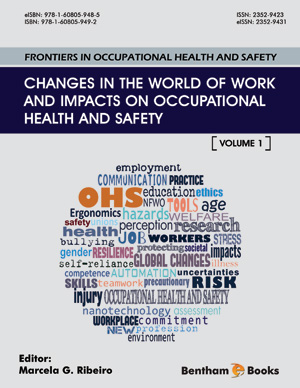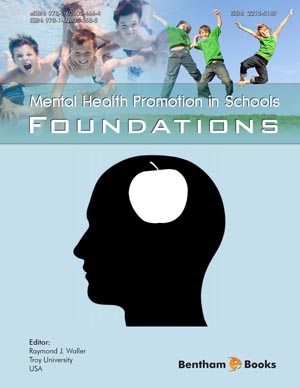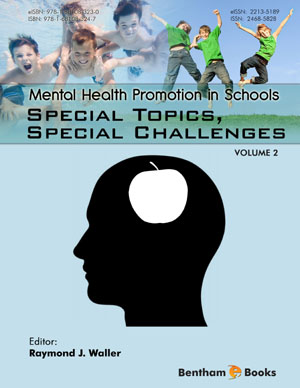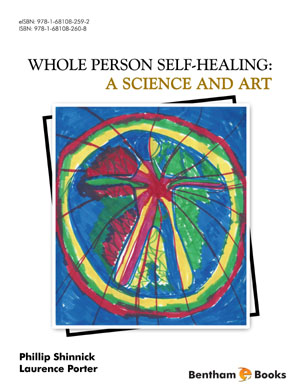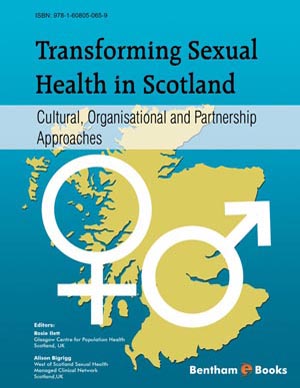List of Contributors In Order of Appearance
Page: iii-iv (2)
Author: Robert G. Malgady
DOI: 10.2174/978160805130411101010iii
Abstract
Full text available.
Comprehensive Assessment for a Multicultural Society
Page: 3-23 (21)
Author: Richard H. Dana
DOI: 10.2174/978160805130411101010003
PDF Price: $15
Abstract
Earlier reviews by this author (Dana, 1999, 2001, 2002a, 2003, 2008a) attempted to expand the role of assessment for multicultural populations in medical-psychiatric settings, but were silent concerning the professional and societal implications inherent in the contemporary underutilization of conventional assessment. Conventional psychological assessment retains supporters (e.g., Meyer et al., 2001), but decreases in practical value, and only retention of treatment utility towards beneficial outcomes by integration into the therapy process (Hayes, Nelson & Jarrett, 1989). Conventional assessment using standard instruments has not succeeded in addressing psychosocial rehabilitation by developing culturally relevant empirically supported practice (Yamada & Brekke, 2008). There is also need to expand the range of culturally adapted standard instruments, develop new methods for culturally competent practice with an extended range of diverse populations, and provide systematic and routine evaluations of providers, programs, and age.
Assessment Bias in Psychological Measurement of Ethnic Minorities
Page: 24-27 (4)
Author: Robert G. Malgady
DOI: 10.2174/978160805130411101010024
PDF Price: $15
Abstract
The issue of reliable and valid assessment of mental health status has been faced in clinical practice since the inception of efforts to evaluate intelligence, dating at least to Spearman's early theory of general intelligence. G-theory, as it became known, presumed that individuals possessed an overall intelligence, as opposed to more varied intelligences in diverse areas, as later expressed by Thurston (1927), and more recently rearticulated by Gardner (1983). Unfortunately, the history of efforts to develop psychological assessment instruments have been largely standardized on white, middle class males. Little or no consideration was given to the diversity of the U.S. population, such as regarding gender, race, and ethnicity, national origin, religious affiliation and religiosity, or any other relevant demographic characteristic. Even within the U.S., various verbal expressions or idioms are uninterpretable by native born Americans, varied from north to south and coast to coast. Language and culture shape the veracity of psychological assessment and subsequent treatment intervention.
TEMAS (Tell-Me-A-Story) Multicultural Assessment in the New Millennium
Page: 28-37 (10)
Author: Giuseppe Costantino, Elsa B. Cardalda, Richard H. Dana, Jose V. Martinez, Francesca Fantini, Filippo Aschieri and Patrizia Bevilacqua
DOI: 10.2174/978160805130411101010028
PDF Price: $15
Abstract
Assessment bias is found among clinicians, in behavioral health service delivery and is exposed as instrument bias in tests/methods (Dana, 1993, 2000, 2005, 2007a). Clinician bias occurs in ethnocentric thinking and by stereotyping clients. Ethnic/racial glosses based on invidious group comparisons as a result of inept comparative research provide bias (Trimble, Helms, & Root, 2003). Preference for imposed etic instruments results from test translation as evidence of cross-cultural validity and failure to employ responsible guidelines for test use (Van de Vijver & Hambleton, 1996). Ignorance of credible social etiquette during professional service delivery can reduce task-orientation; affect the entire response process, including scoring and subsequent interpretation (Sue & Zane, 1987). Diagnostic systems, such as the DSM-IV and DSM-IV-TR, overemphasize psychopathology and thereby limit personality assessment for problems-in-living, particularly issues germane to oppression resulting from cultural origins, age, disability, poverty, social class, gender, and sexual orientation. These sociocultural diversities provide multiple individual identities requiring detailed understanding as a basis for societal services (Atkinson & Hackett, 2004). Test/method bias can impair measurement adequacy and instrument effectiveness (Dana, 1993; Van de Vijver, 2000).
Culturally Informed Evidence-Based Practices: Temas Assessment of Multicutural Children
Page: 38-50 (13)
Author: Giuseppe Costantino, Robert G. Malgady, Louis H. Primavera and Elsa Cardalda
DOI: 10.2174/978160805130411101010038
PDF Price: $15
Abstract
From the inception of cross-cultural investigations using projective/narrative tests in the 1940s, it was observed that the Thematic Apperception Test (TAT) stimuli (Murray, 1943) had questionable relevance to individuals of different cultures. Hence, culturally sensitive TAT pictures were developed to study such groups as Mexicans Indians, Ojibwa Indians, Southwest Africans, and South Pacific Micronesians (Henry, 1955). The work of Monopoli (1984, cited in Dana, 1986) indicated that culture-specific stimuli were necessary for personality assessment of unacculturated Hopi and Zuni Indians. Such early efforts to provide a culture-specific TAT pictures have been rarely pursued by psychometricians (Costantino, Dana, & Malgady, 2007; Dana, 1986; 2009). Even when they were pursued, their validity has been questioned repeatedly over the past five decades. The TEMAS test was developed as a multicultural alternative to the traditional TAT. TEMAS was conceived from a multicultural perspective, and normed and validated on a variety of ethnic populations across this country and the globe. The test stimuli have most recently been employed to structure a storytelling (narrative) psychotherapeutic treatment modality for Hispanic youngsters.
Culturally Competent Psychotherapy for Hispanic/Latino Children and Adolescents
Page: 51-60 (10)
Author: Robert G. Malgady
DOI: 10.2174/978160805130411101010051
PDF Price: $15
Abstract
Racial and ethnic minority individuals experience health disparities and lag behind their non-minority counterparts in access to and utilization of health care, as well as in achieving positive treatment outcomes when services are utilized. Minorities also exhibit greater incidences of debilitating chronic disorders such as diabetes and cardiovascular disease, which are co-morbid with clinical depression (AHRQ, 2006; Nemeroff, Musselman, & Evans, 1998). Disparities in the diagnosis and treatment of mental illness among minority patients are as prevalent as those in primary health care treatment of physical diseases (Snowden, 2003; US DHHS, 2001). Major depression, minor depression, dysthymia, and anxiety are the most prevalent psychiatric disorders affecting Hispanic/Latino children, adolescents, adults, and elderly who seek treatment in primary care settings, and are associated with decreased functioning and increased reliance on health care services (Kessler, Bennewith, Lewis & Sharp, 2002; Lenze, Rogers, Martire, et al., 2001; Olafsdottir, Marcusson, & Skoog, 2001; Schulz, Beach, Ives, et al., 2000; Vourilehto, Melartin, & Isometsa, 2005). Moreover, the prevalence rate of depression is estimated to be higher than the general population among members of the Hispanic/Latino population (Gonzales, Haan, & Hinton, 2001; National Alliance of Hispanic Health (NAHH), 2004), who are as group younger, of lower socioeconomic status (SES), and more likely to drop out of school prior to high school graduation age. These prevalent psychiatric diagnoses are associated with decreased psychosocial and physical functioning, poorer health, greater utilization of primary care services, and increased health care costs (Domino, Maxwell, Cody, et al., 2008; Beekman, Deeg, Braam, et al., 1997; Luber, Meyers, Williams-Russo, et al., 2001).
Culturally Comptetent, Evidence-Based Treatment for Post WTC Disaster Trauma Symptoms in Latino Children
Page: 61-67 (7)
Author: Giuseppe Costantino, Louis H. Primavera and Robert G. Malgady
DOI: 10.2174/978160805130411101010061
PDF Price: $15
Abstract
This study is part of the Child and Adolescent Trauma Treatments and Services (CATS) Consortium, the largest child traumatic stress research related to the September 11th World Trade Center (WTC) disaster (Hoagwood, Vogel, Levitt, et al., 2007). Natural and/or terrorist-made large impact disasters, such as September 11, 2001 terrorist attacks to the WTC in New York City and the Pentagon in Washington DC, and the August 2005 Hurricane Katrina in New Orleans have caused death, destruction, moderate to severe psychological disorders and physical illness among local residents (Galea, Brewin, Jones, et al., 2007; Neria, Nandi, & Galea, 2007). The September 11 terrorist attacks loom as the largest and most devastating human-made disaster on U.S. soil, which, in addition to human and financial losses, caused mental health distress among adults and children. Youngsters seem to be more vulnerable to traumatic stress associated with mass disasters by showing higher psychological distress immediately after the event.
Cultural Competence in Assessment and Social Work Interventions: Implications for Practice and Professional Education
Page: 68-80 (13)
Author: Nancy Gallina
DOI: 10.2174/978160805130411101010068
PDF Price: $15
Abstract
The focus of this chapter is the evolution of social work's quest to achieve understanding of the meaning of and conditions for the development and application of cultural competence by practitioners in relation to assessment and intervention in the context of diverse client populations. To grasp social work's progression toward the achievement of this goal, it is important to understand the core theories and main principles that guide the profession. Central in this core is the person-in-the-environment (PIE) approach. PIE was born early in the development of social work as a profession on the basis of charity work with immigrants in the settlement houses. Two distinct approaches to the helping process emerged. One approach adopted a community oriented viewpoint and focused on social action whereas the other emphasized meeting the needs of individual clients (Shulman, 2006). Those who embraced the social action approach became advocates for the oppressed and fought against poor housing and child labor as well as for better health services (Walsh, 2009). Those who were more focused on individual needs are credited with the development of currently commonly used models for helping individuals and their families (Shulman, 2006). The combined professional mission of serving individual concurrent with being agents for social change is what defines the very nature of social work today and differentiates it from other helping professions.
Contextual Considerations for Effective Mental Health Treatment of Asian Americans
Page: 81-91 (11)
Author: Donna Wang
DOI: 10.2174/978160805130411101010081
PDF Price: $15
Abstract
To date, progress has been made in attempting to provide culturally relevant treatment to individuals who are Asian. Cultural variations such as expressing symptoms somatically, mental illness carrying a stigma and shame, collectiveness stressed over the individual, as well as the lack of mental health providers have been consistently highlighted throughout the literature. This chapter begins with a discussion of those barriers as a starting point for moving forward with possible strategies to increase the competency of mental health care, stressing the importance of the intersectionality of culture and context as a guiding framework. Specific suggestions are then provided for incorporating culturally sensitive concepts into mental health assessment, diagnosis and treatment. A brief overview of some of the benefits and research findings of certain indigenous treatments -tai chi, qigong and acupuncture- are offered as a consideration for alternative treatments to mental health. Lastly, policy, practice and research implications are discussed. In this chapter, I use the term “Asian” consistently throughout to broadly encompass many groups of people, with the understanding that other authors and sources have used different terms, such as Asian American, Asian/Pacific Islander.
Symbolic Violence in the Assessment of Bilingual/Multicultural English Language Learners: A Critical Theoretical Perspective
Page: 92-96 (5)
Author: Reuben M. Castagno
DOI: 10.2174/978160805130411101010092
PDF Price: $15
Abstract
This paper is an attempt to describe and analyz Pierre Bourdieu's radical sociological theory of symbolic violence and its relation to the assessment of bilingual/multicultural English language learners. The framework of critical theory provides a concrete way to understand and to recognize that human reproduction are outgrowths of human experience and therefore reflect human desire, conflict, and potential. In developing a theory of symbolic violence, Bourdieu attempted to specify the processes whereby, in all societies, order and social restraint are produced by indirect, cultural mechanism rather than by direct coercive social control. The theory of symbolic violence is systematically laid out in Bourdieu's book Reproduction in Education, Society and Culture first published in French in 1970. One of the central themes of the book was, creating a great controversy at every level even nowadays, that culture and education are central in the affirmation of differences (and the symbolic violence) between social classes and in the reproduction of those differences.
Human Science and Multicultural Assessment Practice
Page: 97-115 (19)
Author: Richard H. Dana
DOI: 10.2174/978160805130411101010097
PDF Price: $15
Abstract
The first chapter-- Comprehensive Assessment for a Multicultural Society-- examined contemporary underutilization of conventional assessment, a defining historic function of professional psychology, and introduced comprehensive assessment as a necessary rationale for understanding the unmet mental health and social care needs of increasingly diverse resident populations. This final chapter provides a practice model for multicultural competency training addressing these needs for quality services to racial/ethnic populations within a human science aegis. A contemporary national health care debate invokes private and public sector responsibilities, cost-containment, and provision of insurance coverage for a larger percentage of the population. A similar controversy within professional psychology reflects value paradoxes within the larger society (Sue, 1983) that continue to restrict access to health and social care services for racial/ethnic minorities and poor persons. During the same time period, assessment practice per se has been increasingly disparaged and restricted in managed care while many psychologists continued to use culturally inappropriate monocultural instruments for these populations resulting in incomplete information and misdiagnosis. A societal context of political conservatism, biological determinism, and attribution of problems to persons rather than society in mid-twentieth century America minimized early training resources for cross-cultural psychology, primary prevention, and community (Dana, 1987). Professional psychology training was available historically primarily for White male students. Medical socialization absorbed mental health services within health care and mandated patient compliance for diagnostic rather than evaluative assessment. These beliefs contributed to deficiencies in Boulder model science and practice objectives and were mitigated to a limited extent by subsequent Vail model programs that included women students and professional socialization for community practice (Dana & May, 1987). Ultimately critical ratios of women and racial/ethnic minority students were largely responsible for developing multicultural psychology and providing social justice training in counseling psychology.
An early assessment proposal emphasized the importance and meaning of experienced ownership of this service delivery process as a personal self-efficacy resource contributing to positive learning, healing, and growth outcomes (Dana, 1985). A human science predicated on intentionality, phenomenal level descriptions, and shared endeavor affirmed the necessity for understanding the uses of power, knowledge of self and others, and clinician humanity within a human science professional psychology (Dana, 1984). Human science contributions in other wealthy countries from cultural anthropology, cross-cultural psychology, cultural psychology, indigenous psychology, and multicultural psychology now provide an interdisciplinary framework for an applied psychological science within a global perspective as a moral imperative and national priority.
This chapter presents multicultural assessment practice guidelines predicated on client-clinician power-sharing, an enlarged range of assessment objectives, and quality training consistent with advocacy and responsibility for health, mental health, and social care services for all residents. These specific stepwise guidelines provide essential contents for competent professional services to multicultural populations. Although these guideline components have been repeatedly described in research and practice literature, they have not been systematically or routinely incorporated in assessment training programs designed to provide multicultural assessment competency. These ingredients include measurement theory, cultural knowledge, language skills, social etiquette and communication styles, interviewing, instruments, test interpretation, reports, and ethics.
Index
Page: 116-130 (15)
Author: Robert G. Malgady and Touro College
DOI: 10.2174/978160805130411101010116
Abstract
Full text available
Introduction
Without a thorough understanding of culture and its nuances on part of the mental health service providers, alienation, stigma, and culturally based impediments rule. While concerns for diversity have been raised on numerous occasions, with increasing frequency over the past four decades, little progress has been made in implementing such concerns in clinical practice. Over two-thirds of Americans receive treatment for depression, anxiety, substance abuse, and related disorders. Comorbidity is rarely diagnosed. These trends are greatly exacerbated among members of ethnic, cultural, and linguistic minority groups. The authors contributing to this volume share their clinical acumen and experiences, rooted in their evidence-based research. Their purpose is to bring issues attending assessment and treatment of ethnic minority clientele closer to the fore. Some of the leading authors on the topic, in psychology and social work, present their well earned clinical and research experiences in this volume. Case studies are presented which are instructive and intriguing, bringing together the richness of a multidisciplinary approach to the topic.







